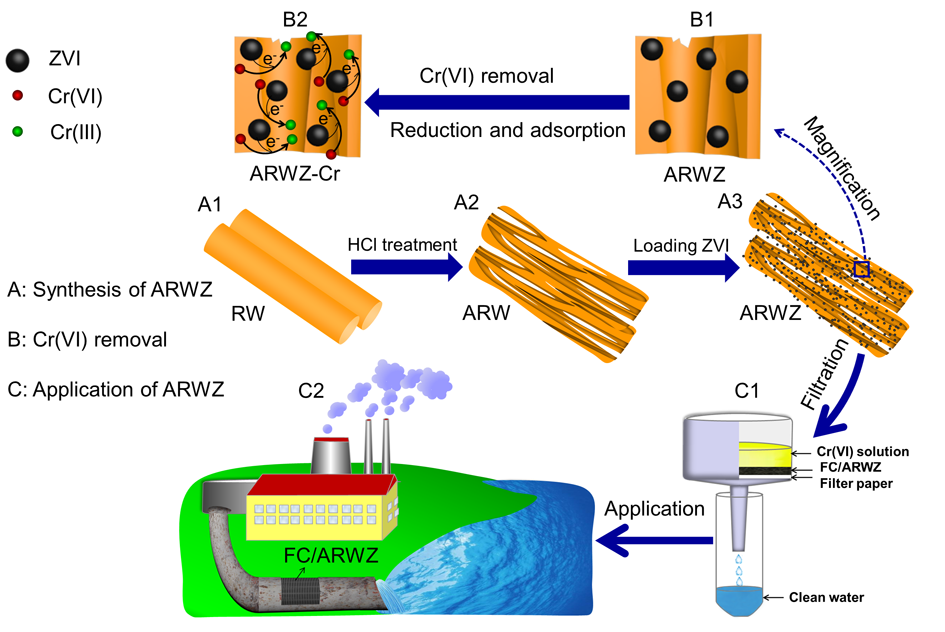
Chinese researchers announced their development of a functionalized nanocomposite based on waste rock wool (RW) and zero valent iron (ZVI) to efficiently remove Cr(VI) from water and soil.
Importantly, the nanocomposite could be conveniently loaded in filter cotton to form a stable filter system (FS) to remove Cr(VI) from industrial sewage, according their paper published yesterday in Chemical Engineering Journal.
Cr(VI), a typical heavy metal resulting from human activities, has posed severe environmental issues because of its high toxicity to human beings, aquatic conditions, and the ecosystem of the earth.
Therein, nanoscale zero-valent iron (NZVI) nanoparticles were widely used to remove Cr(VI) thanks to its high reducibility and convenient separation.
However, the small particle size and magnetic property, hindering the adsorption and reduction capabilities of bare ZVI nanoparticles make it tend to agglomerate to large aggregates.
Looking at this problem, a variety of materials have been developed and used as carriers to prevent aggregation and oxidation of ZVI. However, it remains difficult for these materials to be widely used in industrial scale because of their high cost, complex operation, or low removal efficiency. Hence, carriers with simple fabrication procedure at low cost is one of the dominant bottlenecks for the large-scale application of ZVI in removal of Cr(VI).
A study team led by WU Zhengyan from Hefei Institutes of Physical Science fabricated a novel nanocomposite, named as ARWZ, using ZVI nanoparticles supported by acid modified waste rock wool, or ARW.
ARW displays a porous rod-like structure and could load plenty of ZVI nanoparticles.
Meanwhile, the steric-hindrance effect helps ARW to effectively inhibit the aggregation and oxidation of ZVI nanoparticles. ARWZ could exhibits a large specific surface area and high removal capacity (197.69mg/g) in 30min for Cr(VI) from water and soil through adsorption and reduction, and the product ARWZ-Cr can be easily collected under a magnetic field because of the superior magnetic property.
Importantly, when ARWZ is loaded in filter cotton with a micro/nano networks structure, the product system could be conveniently used as an excellent filter layer to control the migration of Cr(VI).
This work provides a low cost and promising approach to remove Cr(VI), which also promotes the reuse of waste rock wool.
This work was supported by National Natural Science Foundation of China, the Youth Innovation Promotion Association of the Chinese Academy of Sciences, the Key Program of the Chinese Academy of Sciences, the Science and Technology Service Programs of the Chinese Academy of Sciences, and the Science and Technology Major Project of Anhui Province.

Schematic diagram for the fabrication and application of ARWZ for Cr(VI) removal. (Image by ZHOU Linglin)

86-10-68597521 (day)
86-10-68597289 (night)

86-10-68511095 (day)
86-10-68512458 (night)

cas_en@cas.cn

52 Sanlihe Rd., Xicheng District,
Beijing, China (100864)

